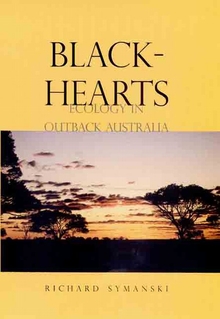Stardust
WARNING
You are viewing an older version of the Yalebooks website. Please visit out new website with more updated information and a better user experience: https://www.yalebooks.com
Supernovae and Life -- The Cosmic Connection
John Gribbin and Mary Gribbin, with a new preface
We are made of stardust—and so is all life as we know it. All the chemical elements on earth except hydrogen—including the ones in our bodies—have been processed inside stars, scattered across the universe in great stellar explosions, and recycled to become new stars, planets, and parts of us.
In this engrossing book, John and Mary Gribbin relate the developments in twentieth-century astronomy that have led to this shattering realization. They begin their account in the 1920s, when astronomers discovered that the oldest stars are chiefly composed of the primordial elements hydrogen and helium, produced in the birth of the universe in a Big Bang. They then describe the seminal work of the 1950s and 1960s, which unlocked the secret of how elements are “cooked” by nuclear fusion inside stars. The heart of the story is their discussion of supernovae, only recently understood as great stellar explosions in which the resulting ash is spread far and wide through the cosmos, forming new generations of stars, planets, and people. Focusing on the relationship between the universe and the Earth, the authors eloquently explain how the physical structure of the universe has produced conditions ideal for life.
In this engrossing book, John and Mary Gribbin relate the developments in twentieth-century astronomy that have led to this shattering realization. They begin their account in the 1920s, when astronomers discovered that the oldest stars are chiefly composed of the primordial elements hydrogen and helium, produced in the birth of the universe in a Big Bang. They then describe the seminal work of the 1950s and 1960s, which unlocked the secret of how elements are “cooked” by nuclear fusion inside stars. The heart of the story is their discussion of supernovae, only recently understood as great stellar explosions in which the resulting ash is spread far and wide through the cosmos, forming new generations of stars, planets, and people. Focusing on the relationship between the universe and the Earth, the authors eloquently explain how the physical structure of the universe has produced conditions ideal for life.
John Gribbin, visiting fellow in astronomy at the University of Sussex, is the author of many bestselling books of science, including In Search of Schrödinger’s Cat: Quantum Physics and Reality, The Search for Superstrings, Symmetry and the Theory of Everything, Almost Everyone’s Guide to Science: The Universe, Life and Everything, and The Birth of Time: How Astronomers Measured the Age of the Universe, the last two published by Yale University Press. He is married to Mary Gribbin, also a science writer.
A selection of Doubleday Select Science Book Club
“Woven into this spellbinding story is the genius of the physicists, astronomers, and scientists whose brilliant leaps of thought enable them to not only theorize about the nature of stars but also prove each successive theory correct. . . . Stardust is an excellent introduction to the processes that make the stars. Informative yet not mired in detail, it is in language most adults will easily understand.”—Jackie Kieres, Big Muddy: A Journal of the Mississippi River Valley
“The ancient and continuing cataclysms that produce the atoms of which we are made is the subject of this modest, excellent book. . . . [The] descriptions of the mechanics of stellar life and death are exquisite. The organization of the book is logical, the writing compelling, the index useful, and the price right. A strongly recommended buy for college and university libraries, for students of any age or major.”—Choice
“All manner of fascinating historical anecdotes fill the book. It is rich in stories of the involvement of the great and the good of astrophysics.”—Literary Review
“Gribbin details the developments in 20th century astrophysics that helped solve the mystery of the origin of the elements and, in the process, focuses on the relationship between life and stellar evolution. . . . Throughout the book Gribbin’s theme remains clear and focused—how we came to know that we are all made of stardust.”—Sky & Telescope
“Readers of popular astronomy books are always being asked to imagine the unimaginable by means of metaphors, but here [Gribbin and Gribbin] downplay metaphor because the very thing that is so astonishing about the creation and distribution of matter across the universe is its literal truth. Certainly, their collateral tale—the explosive growth in our understanding of the universe—is no less fascinating.”—The New Yorker
“Stardust is a stunning little book, poetic in feeling, as vast as a voyage through outer space.”—John Cornwell, The Sunday Time, London
“A fascinating account of an underappreciated subject—the long evolution of chemical matter undergoing transformations in stars.”—Lynn Margulis
Selected as an Outstanding Academic Title for 2001 by Choice Magazine
ISBN: 9780300090970
Publication Date: August 11, 2001
Publication Date: August 11, 2001
260 pages, 5 x 8
22 b/w illus.
22 b/w illus.












